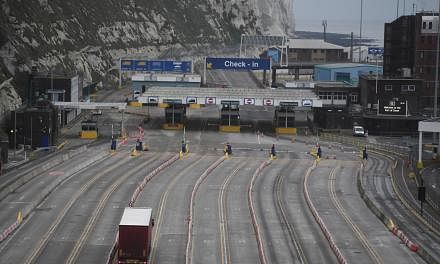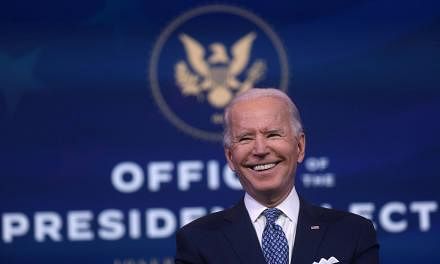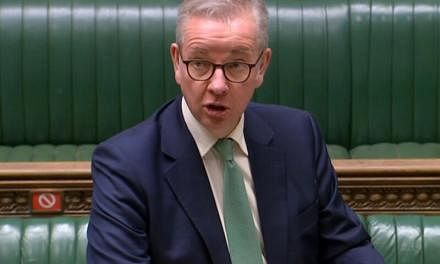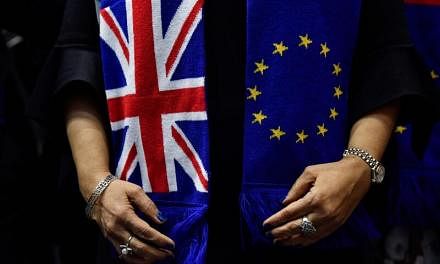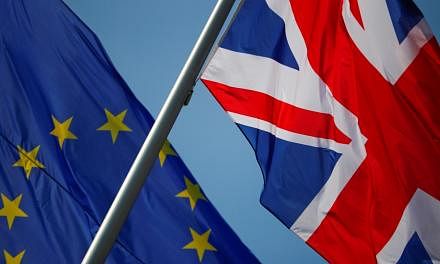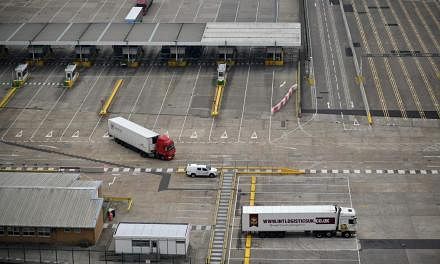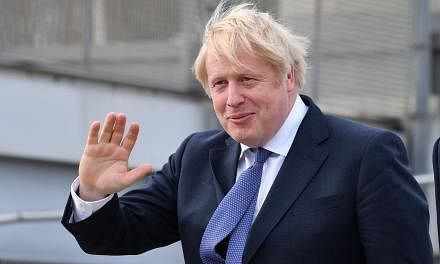LONDON (REUTERS) - Sterling plunged briefly below US$1.24 for the first time in 27 months on Tuesday (July 16) and also hit six-month troughs against the euro as the two candidates to be Britain's next prime minister vied to outgun each other on taking a harder Brexit stance.
Their positions appear to be leading markets to price a sharply higher risk of Britain leaving the European Union on Oct 31 without any transition trading agreements in place.
That would potentially force the Bank of England to cut interest rates to stave off an economic catastrophe.
The pound suffered its biggest one-day fall since March after Boris Johnson and his rival to be Conservative Party leader, Jeremy Hunt, said late on Monday they would not accept the so-called Northern Irish backstop element of Theresa May's Brexit deal.
Both are trying to appeal to the majority of the Conservatie Party members who want to make a clean break with the EU.
Johnson further stoked no-deal Brexit fears by vowing to send British lawmakers home for up to two weeks in October if her becomes prime minister, though sterling weakness was exacerbated by a bounce in the dollar following strong US retail sales data.
A move like that could prevent them stopping a no-deal Brexit.
The contest between Johnson and Hunt "has transformed into an arms race of who is a bigger Brexiteer," said Vasileios Gkionakis, global head of forex strategy at Lombard Odier.
The backstop, one of Brussels' principal demands in Brexit negotiations, is designed to prevent the return of a hard border between EU member Ireland and British province Northern Ireland.
If implemented, the UK would follow many EU rules until arrangements are made to avert a hard border.
"The market is pricing in a higher probability of a no-deal Brexit and an increase of economic pressure... You have the perfect storm for sterling," Gkionakis added.
The British currency weakened 0.9 per cent on Tuesday to US$1.2409 , having plunged earlier to US$1.2396, the lowest since April 2017 and below the "flash crash" of US$1.2409 on Jan 3.
The new Conservative leader is expected to be announced on July 23. According to Refinitiv data, market participants own more than US$800 million in sterling "put" options with a strike of US$1.20 expiring July 26, making this the next key level to watch for. A put gives the right to sell an asset at a certain price.
Against the euro, the pound fell 0.5 per cent to a low of 90.47 pence, the lowest since Jan 11.
The weakness extended even after employment data showed average weekly earnings unexpectedly rose 3.4 per cent year-on-year in the three-months to May. However, the labour market strength is widely attributed to employers hiring workers whom they can later lay off if needed.
And employment growth slowed to post the weakest increase since the three months to August last year, in a sign that labour markets may soon start feeling the heat.
Money markets are now pricing a roughly 50 per cent chance of a BoE rate cut by end-year, having increased their bets after recent comments by governor Mark Carney were viewed as dovish .
Nomura strategist Jordan Rochester attributed the pound's most recent lurch lower to investors' renewed interest in hedging sterling risks.
"The FX market already has a sizeable short sterling positioning on. But I am worried that volatility is starting from a very low base and hedging flows will be picking up further," Rochester told clients.
According to data from the Commodity Futures Trading Commission, the week to July 9 saw speculators increasing net short sterling positions to US$5.69 billion - the fourth consecutive week of increase.
Implied volatility in sterling measured by the cost of six-month options contracts, which encompasses the Oct 31 Brexit deadline, rose to a five-week high. Three-month vol is at the highest since April .
But despite the clock ticking down to October, most investors believe a deal will eventually be reached.
Only 20 per cent of respondents surveyed by Bank of America Merrill Lynch expect the UK to leave the EU on or before the current October deadline and about 60 per cent put the probability of a no-deal Brexit below 40 per cent.

